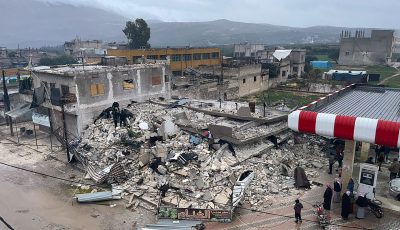Hawaii vog cuts Marianas visibility
The haze from an erupting volcano in Hawaii has reached the Marianas and is affecting visibility in the region.
According to the National Weather Service in Guam, latest observations across the Marianas is showing reduced visibilities of around 7 miles. This indicates that the volcanic haze being produced by Mount Kilauea has reached the region.
Kilauea volcano on Hawaii’s Big Island has had molten rock shooting toward the sky, lava oozing from the ground and ash clouds rising miles into the air in the past three weeks.
According to Google, Hawaii is 3,857 miles away from the Marianas region.
Satellite imagery compiled at the CNMI Emergency Operations Center-State Warning Point shows a dense plume of haze spanning the central Pacific that becomes more diffused closer to the Marianas. The haze is being carried along by the east-northeast trade winds.
Winds are expected to continue bringing haze into the Marianas the next couple of days.
A trough in the central Pacific is expected to redirect haze farther to the north later this week, reducing the haze in the Marianas.
Scientists say higher sulfur dioxide emissions recorded at the volcano’s vents in recent days are creating the potential for heavier than usual vog, or volcanic smog. So far, trade winds have been mostly blowing the gray haze offshore.
Residents across the Marianas region should continue to monitor information from their local emergency management offices and the National Weather Service. Residents with respiratory health problems should stay indoors and minimize time outdoors when haze is seen. Mariners and pilots should be aware of slightly lower visibilities caused by this haze.
Symptoms for generally healthy people can include burning eyes, headaches and sore throats. But those with asthma or other respiratory problems can end up hospitalized. Those who are healthy, physically active and don’t smoke can usually tolerate basic symptoms.
Volcanic smog, or air pollution, is created by vapor, carbon dioxide and sulfur dioxide gas released from Kilauea. It reacts in the atmosphere with oxygen, sunlight, moisture and other gases and particles. In a matter of hours or days, it converts to fine particles that scatter sunlight, creating a haze that can be seen downwind of Kilauea, according to The Interagency Vog Dashboard, which is made up of Hawaii, U.S. and international agencies.
The U.S. Geological Survey said sulfur dioxide emissions from the volcano have more than doubled since the current eruption began.
Kilauea was belching 15,000 tons (13,607 metric tons) of the gas each day, up from 6,000 tons (5,443 metric tons) daily prior to the May 3 eruption. People living miles from the eruption are paying attention to the amount of noxious fumes pouring out of the volcano because it creates potential for more vog.
CNMI residents are being advised to stay informed on the latest statements and advisories that will be available through local media sources and NOAA weather radio broadcast on 1625 megahertz, or call the CNMI EOC State Warning Point at 237-8000 or 664-8000, and for the Northern Islands to contact the CNMI EOC State Warning Point at high frequency single side band radio on frequency 5.205.0. (EOC/With AP)



























